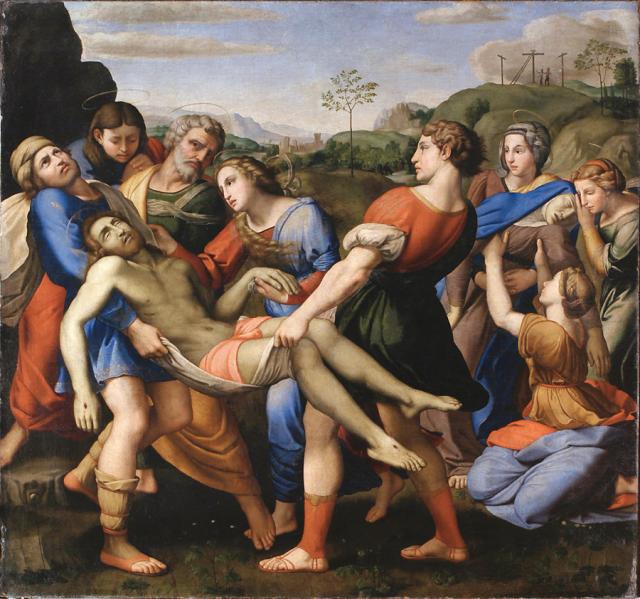The laying of Jesus in the tomb, copy of Pala Baglioni by Raffaello
San Pietro Museum Complex

Giovan Battista Salvi, known as il Sassoferrato
oil on canvas
1639
Recent restoration work on this painting revealed the date MDCXXXIX on the hem of Nicodemo’s tunic (he’s the one supporting Christ by the shoulders), which has meant it’s at last been possible to clarify the chronology of one of Sassoferrato’s major works in Perugia.
This canvas is a copy of Raffaello’s famous work Pala Baglioni which was originally commissioned by Atalanta Baglioni for the San Francesco al Prato church in Perugia soon after the death of his son Grifonetto (1507). Cardinal Scipione Borghese fell under the spell of Raffaello’s original work and carried it off to Rome in 1608. This misappropriation was so taken hard by the city that in 1609 Paolo V Borghese (Scipione’s uncle) commissioned a replica from Cavalier d’Arpino to be installed in San Francesco al Prato.
Sassoferrato’s time in Rome, where he lived with Domenichino, is well documented from 1629 onwards. He took up permanent residence there at the end of the 1640s and remained in the city until his death. In Rome he was able to view Raffaello’s originals and lend his own language toward recovering the figurative sources of the early 16th century.
His works include panels featuring figurative reinterpretations of Fede (Faith) and Speranza (Hope): now held in the Galleria Tesori d’Arte at the Fondazione per l’Istruzione Agraria (Agricultural Training Foundation), are larger reproductions of two of the three theological virtues Raphael himself executed on the predella of the Baglioni Deposition.